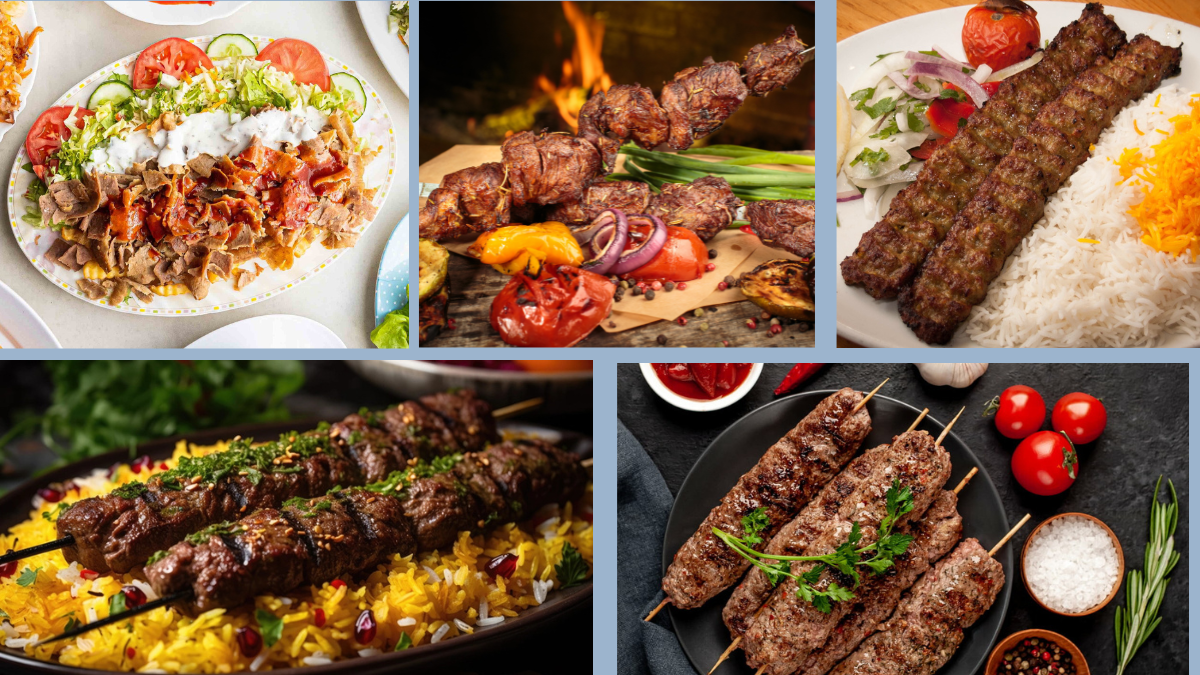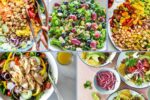Kebabs are one of the world’s most beloved street foods, offering smoky flavors, bold spices, and the convenience of grab-and-go eating. Traditionally associated with skewered meat grilled over an open flame, kebabs have evolved over time into a broad culinary category that includes delicious vegetarian options packed with flavor, nutrition, and cultural significance.
So, when we ask:
“Which country eats the most kebabs in the world?”
The answer is: Turkey—the birthplace of the döner kebab and a country where kebabs are deeply woven into the culture.
However, in this vegetarian-friendly exploration, we’ll reinterpret kebabs from a meat-free perspective, focusing on countries that have embraced vegetarian kebabs as part of daily cuisine, street food culture, or modern plant-based diets.
Let’s dive into:
- The origins of kebabs
- Countries with the highest kebab consumption
- Rise of vegetarian kebabs
- Popular veg kebab varieties
- Regional styles and serving methods
- Health benefits of plant-based kebabs
- Global kebab trends
What is a Kebab?
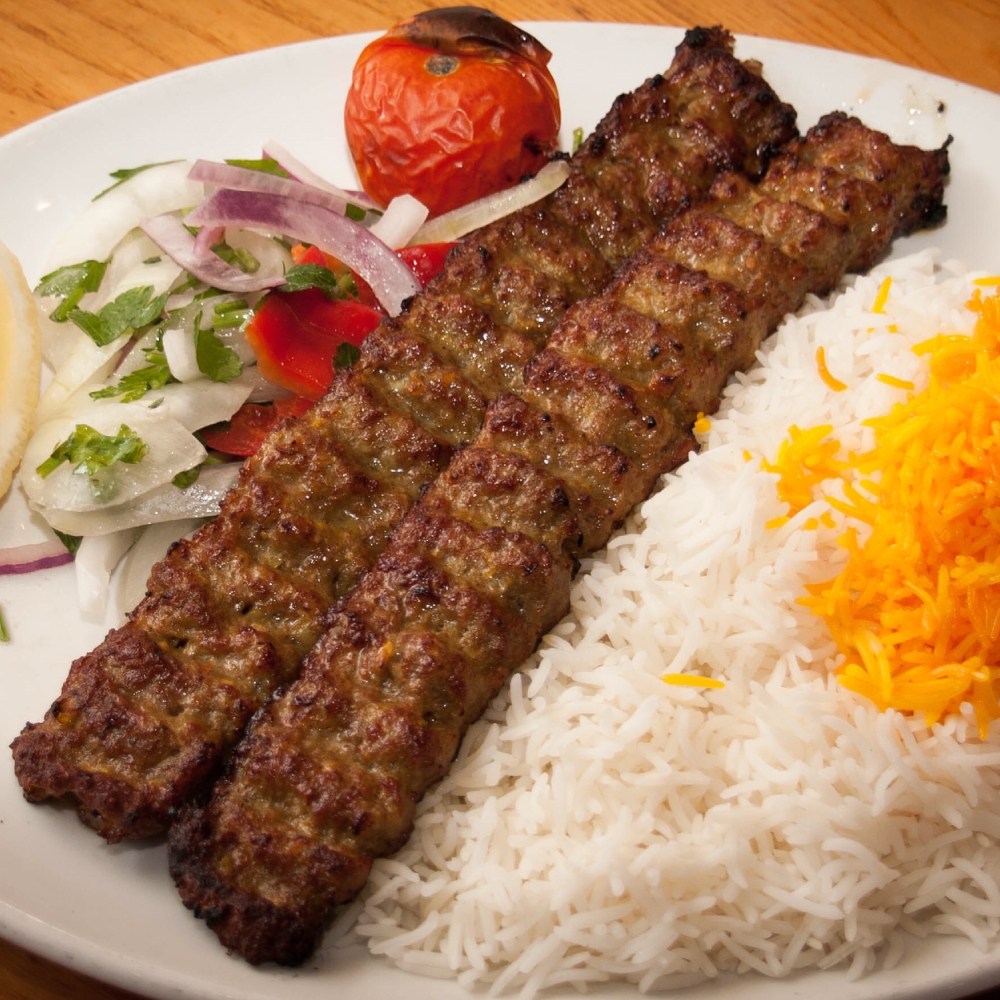
The term “kebab” generally refers to any dish that involves grilling, roasting, or skewering ingredients—often served with flatbread, rice, or salad. In many cultures, kebabs go beyond meat to include:
- Grilled vegetables
- Legume-based patties
- Paneer (Indian cottage cheese)
- Plant-based meat alternatives
- Tofu, tempeh, or mushrooms
In a modern vegetarian context, kebabs are versatile, protein-rich, and filled with spices, herbs, and hearty ingredients.
Turkey: The Global Kebab Leader
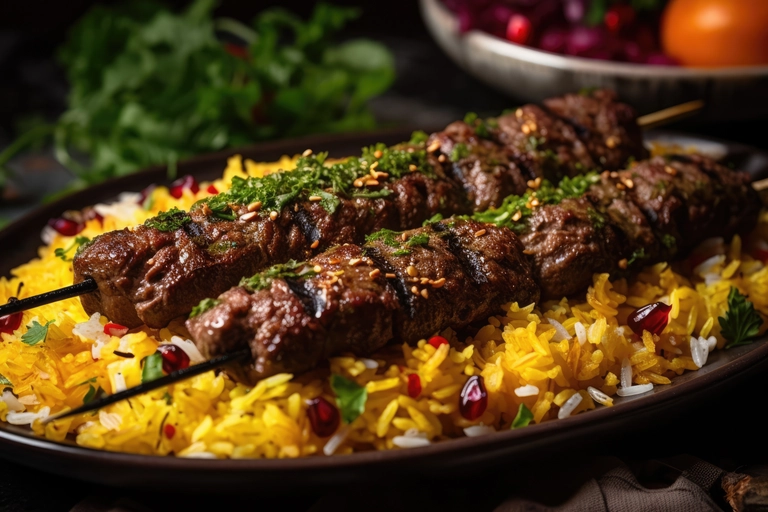
Why Turkey Tops the List
- Turkey is considered the birthplace of the kebab, with a rich tradition of both meat and non-meat varieties.
- Kebab stalls are as common in Turkish cities as cafés or bakeries.
- While most Turkish kebabs are meat-based, vegetarian versions such as vegetable shish kebabs, eggplant kebabs, and chickpea köfte (meatless patties) are also widely enjoyed.
Famous Turkish Vegetarian Kebabs:
- Sebzeli Şiş Kebabı (Vegetable Skewer Kebab): Grilled tomatoes, peppers, zucchini, and eggplant
- Mercimek Köftesi (Lentil Kebab): A mixture of red lentils, bulgur, and herbs
- İmam Bayıldı (Stuffed Eggplant): While not a kebab by strict definition, it’s often grilled and served in kebab houses
The Global Rise of Vegetarian Kebabs
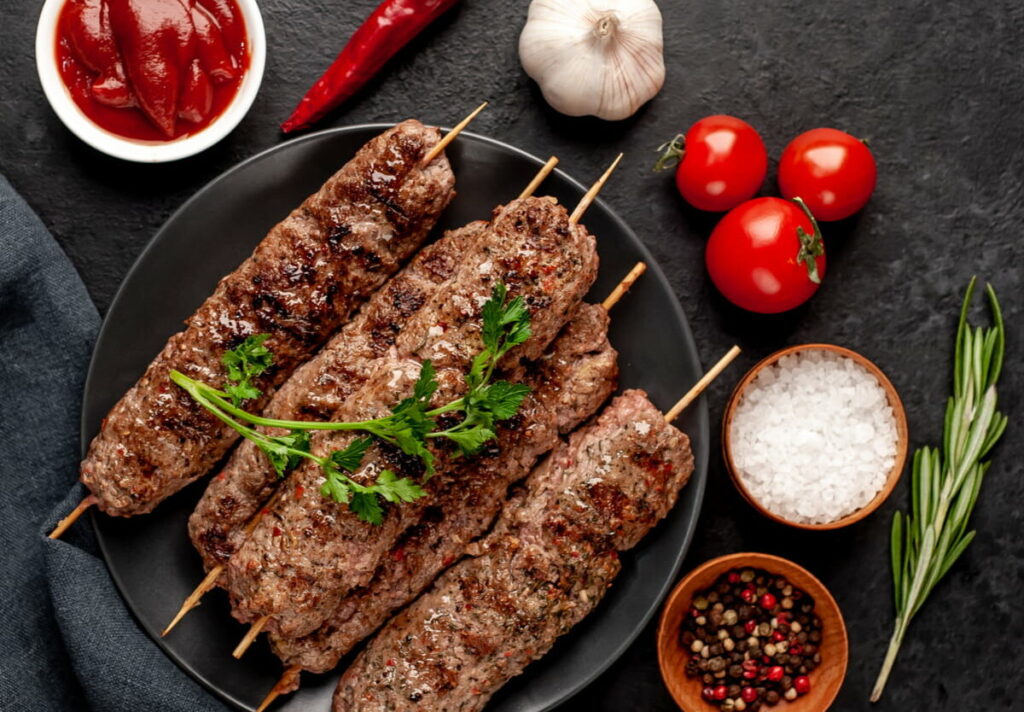
As plant-based lifestyles grow, vegetarian kebabs are seeing an incredible rise worldwide. They offer the smoky, spiced satisfaction of classic kebabs—without the meat.
Why People Are Choosing Veg Kebabs:
- Healthier (lower in fat and cholesterol)
- More sustainable (less environmental impact)
- Inclusive for vegetarians, vegans, and flexitarians
- Easily adaptable to regional tastes and ingredients
Let’s look at the countries embracing vegetarian kebabs the most.
Countries That Love Vegetarian Kebabs
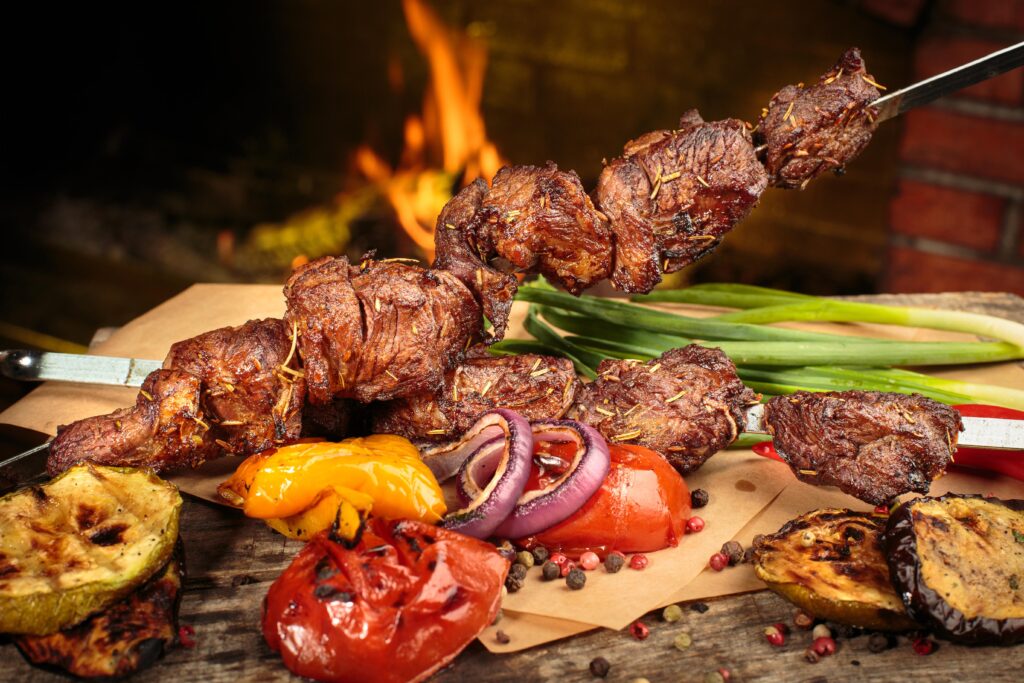
India – The Vegetarian Kebab Powerhouse
India might not consume the most kebabs in general, but it is a global leader in vegetarian kebab variety.
Why?
- India has the world’s largest vegetarian population.
- Kebabs have been localized to include paneer, lentils, potatoes, and more.
- Street food stalls and fine-dining restaurants alike serve veg kebabs.
Popular Veg Kebabs in India:
- Hara Bhara Kebab – Spinach, peas, and potato patties spiced with garam masala
- Dahi ke Kebab – Hung curd (thick yogurt) mixed with flour and spices, deep-fried or grilled
- Paneer Tikka – Marinated cottage cheese cubes grilled on skewers
- Rajma Galouti Kebab – Kidney beans mashed with herbs and grilled until crispy
Kebabs are often served with mint chutney, onion rings, and warm naan.
United Kingdom – Kebab Culture Reimagined
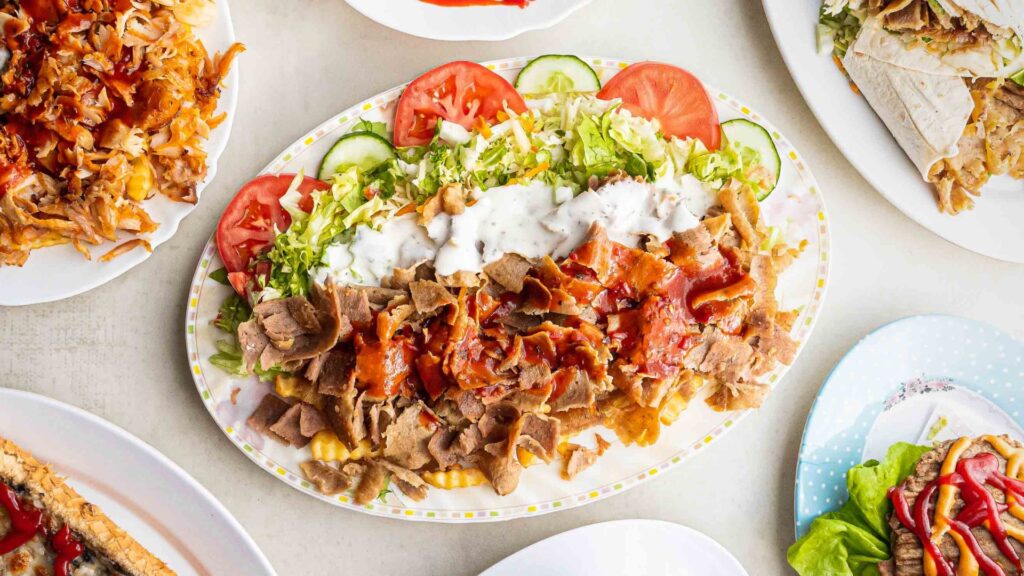
The UK has one of the most diverse kebab scenes in the world, thanks to its multicultural society. While döner and shish kebabs are traditionally meat-based, vegetarian kebabs are trending in major cities.
- Vegan kebab restaurants such as What The Pitta! and Mildreds have gained cult followings.
- Supermarkets carry frozen falafel kebabs, meat-free skewers, and seitan-based options.
- Kebab shops increasingly offer halloumi, falafel, and mushroom-based wraps.
Germany – Döner Goes Vegetarian
Germany is known for popularizing döner kebabs in Europe. While it was originally meat-centric, the vegetarian döner movement is booming in Berlin and beyond.
- Vegan döner options made with soy, seitan, or jackfruit are widely available.
- Restaurants like Vöner offer 100% plant-based kebab experiences.
- Salads, pickled vegetables, and vegan yogurt sauces replace traditional toppings.
Lebanon – Home of the Falafel Kebab
Lebanon is known for its rich and balanced Mediterranean diet. While meat kebabs are common, falafel kebabs are among the most iconic vegetarian dishes.
- Falafel – Deep-fried patties made from ground chickpeas, herbs, and spices
- Served inside pita bread with hummus, tahini, lettuce, tomato, and pickled vegetables
- Widely consumed not only in Lebanon but across the Middle East and worldwide
Types of Vegetarian Kebabs Around the World
Grilled Veg Skewers
Zucchini, bell peppers, mushrooms, and tomatoes on skewers—seasoned with herbs, olive oil, and lemon.
Paneer Tikka
Cubed paneer marinated in yogurt, turmeric, chili, and spices, then grilled. A staple in Indian cuisine.
Lentil or Chickpea Patties
Ground legumes mixed with spices and breadcrumbs, shaped into patties and either grilled or pan-fried.
Falafel
A Middle Eastern classic. Crispy, flavorful, and protein-rich.
Sweet Potato Kebab
Mashed sweet potatoes mixed with spices, green chilies, and herbs, shallow-fried until golden.
Stuffed Bell Peppers
Roasted peppers filled with spiced rice or vegetables—served grilled or baked.
How Vegetarian Kebabs Are Served
- In wraps or pita bread – With sauces like tahini, mint chutney, or vegan mayo
- On skewers – With roasted vegetables or bread
- On a platter – With rice, salad, or dips like hummus, tzatziki, or chutney
- As street food – Served in foil or paper wraps, often with a squeeze of lemon
Health Benefits of Vegetarian Kebabs
- Rich in fiber – Thanks to legumes and vegetables
- Good source of plant protein – Especially from lentils, chickpeas, and tofu
- Low in cholesterol – Since no animal fat is involved
- Packed with antioxidants – Thanks to herbs and spices like cumin, coriander, and turmeric
The Future of Vegetarian Kebabs
- Plant-based meat companies are creating kebab alternatives using soy, pea protein, and jackfruit.
- 3D-printed vegan kebabs are being developed in European food tech labs.
- Vegan kebab festivals are gaining popularity in cities like London and Berlin.
- Home cooking kits for veg kebabs are booming on platforms like Amazon and HelloFresh.
Fun Facts
- The word “kebab” is believed to originate from the Arabic word kabāb, meaning “to burn” or “to grill.”
- In India, kebabs were popularized during the Mughal era, and vegetarian adaptations emerged in royal kitchens.
- Germany sells over 600 million döner kebabs a year—and plant-based versions are catching up fast!
Final Thoughts: A New Era of Kebabs
While Turkey still leads in total kebab consumption, the future is clearly turning plant-based. India leads in vegetarian kebab diversity, while countries like the UK, Germany, and Lebanon are redefining kebabs to suit modern, health-conscious, and ethical diets.
Vegetarian kebabs aren’t just alternatives—they are flavorful, culturally rich dishes in their own right. From grilled paneer to crispy falafel, there’s a meat-free kebab for every palate and occasion.
So next time you’re craving something smoky, spicy, and satisfying—skip the meat and dive into the world of vegetarian kebabs. You’ll discover that the sizzle and spice are just as good—if not better—without the meat.
